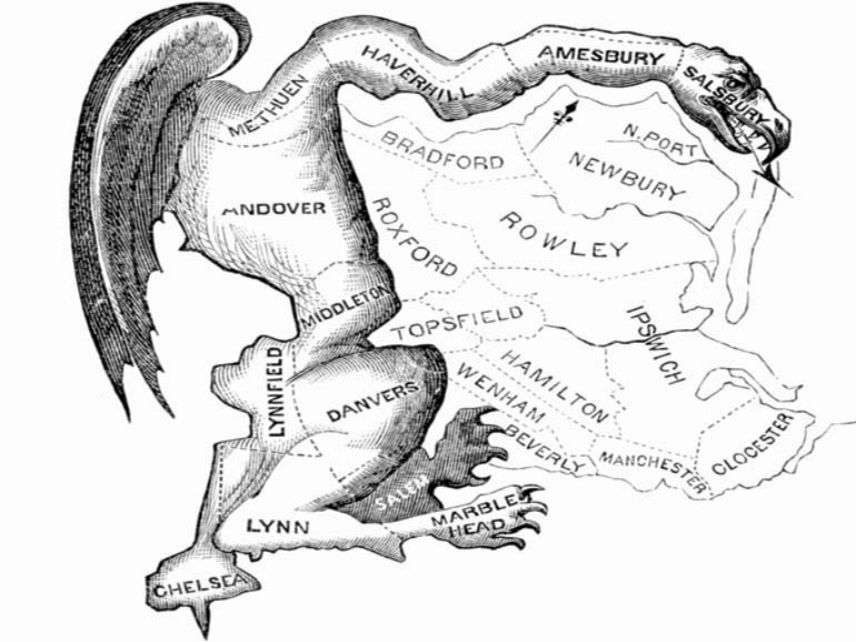Will the Supreme Court Stop Politicians from Choosing Their Voters?
Social science could help identify objective principles for creating competitive voting districts.

The Supreme Court may soon decide whether a state's electoral districts can be so stacked toward one party that they violate the Constitution.
The case, Gill v. Whitford, revolves around the district boundaries established by the Wisconsin state legislature after the 2010 census. That map helped Republicans to win 60 of 99 legislative seats, even though Democrats won more votes statewide—1,417,359 to the GOP's 1,249,562. Such partisan redistricting is known as gerrymandering, after Massachusetts Gov. Elbridge Gerry, who in 1812 signed an egregious redistricting bill. (One of the voting districts it created resembled the shape of a salamander—thus, "gerrymander.")
A new Harvard study, "Why Competition in the Politics Industry Is Failing America," argues that pervasive gerrymandering is one of the practices that is making our political system so dysfunctional. The authors, Katherine Gehl and Michael Porter, write:
The politics industry is different from virtually all other industries in the economy because the participants, themselves, control the rules of competition. There is no truly independent regulation of politics that protects the public interest. Free from regulation and oversight, the duopoly does exactly what one would fear: The rivals distort the rules of competition in their favor. Examples of this includes controlling access to the general election ballot, partisan gerrymandering, and the Hastert Rule, which puts partisan concerns above legislating for the public interest.
As Gehl and Porter point out, gerrymandering reduces competition by creating "safe seats" for one party, which reduces the accountability of elected representatives from gerrymandered districts since they answer chiefly to voters in their party primary.
When the case comes before it on October 3, the Supreme Court may overcome its past reluctance to intervene in how the coequal legislative branch of government sets its electoral rules. Although the Court may be tempted to rule in favor of institutional changes such as establishing independent electoral commissions to decide district boundaries, recent research finds that such bodies aren't any fairer than state legislatures.
Perhaps recent advances in social science can help the court derive a set of objective principles for creating fair voting districts. As I reported earlier, some researchers suggest that the "efficiency gap" be used as metric for determining constitutionally forbidden excessive gerrymandering. The efficiency gap is "the difference between the parties' respective wasted votes in an election, divided by the total number of votes cast." Votes are deemed "wasted" if they are cast for a defeated candidate or cast in excess of those needed to elect a winning candidate; if a party is simultaneously getting an unusually high number of landslide victories and an unusually high number of crushing losses, that would be a sign of gerrymandering.
Another set of researchers have devised algorithms that draw voting district boundaries based on contiguity, geographical compactness, and a difference in population of no more than 0.1 percent. When comparing a set of randomly drawn maps using this algorithm to the actual electoral maps adopted by the state legislature, the researchers found in North Carolina that on average, 7.6 of the state's 13 congressional seats would have gone to Democrats, instead of just the four they actually won.
If the Supreme Court declines to intervene, plaintiff's lawyer Danielle Lang tells Reuters, "There would be no way for voters to rein in partisan gerrymandering, no way for voters to take back control of their government."

Show Comments (110)